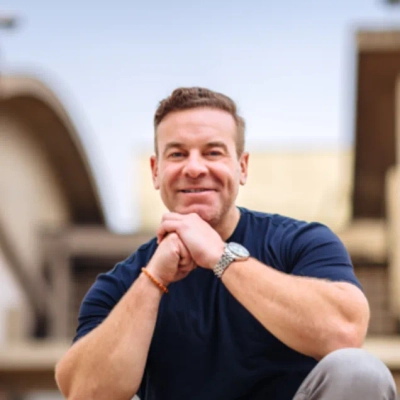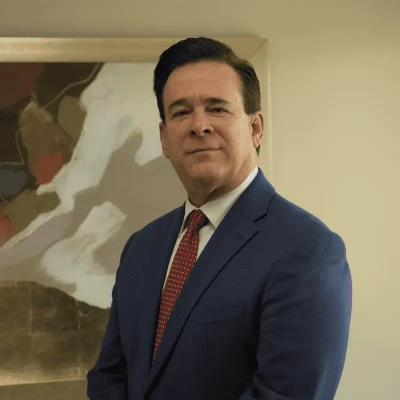15 Ways to Balance Short-Term Financial Satisfaction with Long-Term Security
Balancing short-term financial satisfaction with long-term security requires strategic planning and disciplined execution. Leading financial experts share practical approaches to achieve both immediate rewards and future stability through intentional income allocation and strategic investments. These proven methods help create a sustainable financial framework that satisfies current needs while building toward important long-term milestones.
Reinvesting Revenue for Compounding Traffic Growth
I made a conscious decision to reinvest most of the early revenue from What Kind of Bug Is This into content and SEO, instead of pulling it out as profit. It hurt in the short term — I could've paid myself more or grown slower — but I wanted the site to build durable traffic that compounds over time.
One trade-off that surprisingly paid off was delaying the monetization of ads. It kept the user experience clean and trustworthy, which helped us rank better and gain credibility faster. That goodwill turned into long-term value through partner deals and brand trust — way more than early ad clicks would've brought in.
Dividing Income Intentionally Transforms Financial Peace
Balancing short-term financial satisfaction with long-term security was something I had to learn through trial and error. In my early years, I was focused on immediate comfort—treating myself after every milestone and rarely thinking beyond the next few months. Eventually, I realized that this approach left me anxious whenever unexpected expenses appeared. So, I started using a system where every bit of income was divided intentionally: a portion for present enjoyment, a larger chunk for future investments, and a safety buffer for surprises.
The trade-off was cutting back on spontaneous spending, which initially felt restrictive. But over time, that discipline created something unexpected—peace of mind. Watching my savings grow and knowing I could handle a financial setback without panic was more satisfying than any impulse purchase ever had been. Interestingly, I also became more selective with how I spent my "fun money." I stopped buying things that brought only fleeting happiness and began investing in experiences or tools that actually improved my life.
That shift taught me that long-term security doesn't have to mean sacrificing joy—it just requires redefining what satisfaction looks like. Now, every financial decision feels like it serves both the present and the future, and that balance has brought me a sense of freedom I didn't anticipate.

Working Backwards from Five-Year Financial Milestones
I've found that balancing short-term satisfaction with long-term security requires working backwards from major financial goals in five-year increments. By breaking these ambitious objectives down into milestone ages and conducting annual reviews, I can make necessary adjustments to savings, investing, and spending while still enjoying life today. The unexpected benefit of this approach was how these regular checkpoints prevented small deviations from becoming major setbacks, allowing me to course-correct without sacrificing quality of life or long-term financial security.

Reinvestment Creates Mental Freedom for Strategic Decisions
Balancing short-term satisfaction with long-term security took discipline—and a few uncomfortable choices. Early on, I made the decision to reinvest profits from AIScreen back into R&D instead of paying myself a larger salary. It wasn't easy watching peers enjoy quick wins while I focused on building infrastructure and developing AI-driven digital signage technology that would scale sustainably. That trade-off, though tough at first, became the turning point for our growth.
The unexpected benefit was mental freedom. By focusing on reinvestment and long-term stability, I stopped chasing short-term validation and started making more strategic decisions. I also set visual reminders—digital signage dashboards in the office that displayed savings milestones and future goals—to stay motivated through the slow stretches. It reinforced a powerful lesson: patience compounds like interest. The security I built by thinking long-term eventually gave me both financial stability and creative flexibility.

Multiple Investment Goals Satisfy Current and Future
I simply set multiple goals that help me achieve both of these things, particularly with my investing. I have a variety of investments, and some of them are specifically set up to help me in the long-term with my financial security (like most of my real estate investments), and others I dedicate more toward my current budget and spending needs.
Local Focus Builds Reputation Over Quick Profits
Balancing short-term cash flow with long-term security in this business is like choosing between using cheap asphalt shingles and high-grade impact-resistant material. One gives you a quick, cheap install; the other protects the client's home—and your reputation—for decades.
My goals have always been set with one principle: Don't chase the quick, high-margin, one-off job. The trade-off we made was simple: we decided not to take any jobs outside of a defined 50-mile radius. In the short term, this meant we passed up big, easy paychecks on jobs further out of town. Financially, it was a hit to our immediate satisfaction.
But that trade-off unexpectedly benefited us with long-term security. By sticking close to home, we became the undisputed local expert. Instead of spending hours driving and trying to manage remote crews, we spent that time perfecting our quality right here in our community. We built density. When a hailstorm hits our area, we are the first call because people see our trucks every day and know our work. We turned drive time into marketing time.
That local density created a rock-solid reputation and a flow of high-quality referrals, which is the definition of long-term security. We missed out on some quick money, but we gained a steady, predictable stream of business that doesn't rely on chasing storms or aggressive marketing. The best way to achieve long-term security is to be a person who is committed to a simple, hands-on solution that prioritizes quality and community over quick profit.
Dual-Layered Goals Balance Immediate and Strategic
Balancing short-term financial satisfaction with long-term security required a clear distinction between immediate gratification and strategic growth. I approached this by setting dual-layered goals: one that addressed daily or monthly financial wins, such as freelance income or project-based bonuses, and another that focused on long-term stability, like retirement contributions, investments, or building scalable business assets. Each decision was evaluated against both lenses—will this satisfy an immediate need, and does it support a sustainable future?
An unexpected trade-off that benefited me was delaying certain higher-paying projects in favor of opportunities that allowed me to develop skills and build long-term business relationships. Initially, it felt like passing up short-term money, but it ultimately created higher-value contracts, recurring revenue, and more professional credibility. Sacrificing immediate cash flow for strategic positioning paid off in ways that exceeded what short-term financial wins could have delivered, reinforcing the value of patience and foresight in goal setting.

Security Infrastructure Investment Creates Competitive Advantage
I made the decision to invest heavily in security infrastructure—even when it meant tightening the belt elsewhere. It wasn't the most popular move at the time. In the short term, it meant we passed on some tempting marketing opportunities and held off on a few hires. However, I couldn't shake the feeling that building client trust through rock-solid cybersecurity would ultimately pay off. One specific moment that confirmed this was when a prospect came to us after a breach at their previous provider. Because we had already implemented advanced monitoring and compliance tools, we were able to onboard them quickly and give them the confidence they needed. That client's contract ultimately became one of our longest and most lucrative.
The trade-off? Slower growth in the first 12 months. However, that slower pace allowed us to refine our service model and establish a culture centered on accountability and security. It also differentiated us in a crowded MSP market. What felt like a delay turned out to be our biggest competitive advantage. I've learned that sometimes "not yet" is the smartest answer—especially when it's tied to long-term stability and client retention.

Refusing Wrong Clients Reshapes Business Pipeline
A few years ago, we had the opportunity to sign a large client that would've given us a significant revenue boost—but they were notorious for being high-maintenance and slow to pay. At the time, the short-term financial gain was tempting. We had some aggressive quarterly targets, and bringing them on would've helped us hit those numbers. However, after taking a closer look, I decided to walk away. It wasn't easy, especially when we were staring at a potential shortfall. But I kept coming back to the idea that short-term wins shouldn't come at the expense of long-term stability. That client could've tied up our resources, strained the team, and hurt our ability to serve our core customer base.
What surprised me was how that one trade-off reshaped our pipeline. Saying "no" freed us up to focus on clients who were a better fit—reliable, collaborative, and aligned with our work approach. Within six months, we'd landed three smaller accounts that grew organically and ultimately proved more profitable in the long run. It taught me that long-term security isn't just about savings or risk mitigation—it's about protecting your culture and operational focus, even when it incurs an upfront cost.
Professional Certifications Yield Enhanced Career Opportunities
Choosing to allocate discretionary income toward professional certifications rather than immediate lifestyle upgrades proved to be the most rewarding trade-off. At the time, it felt like postponing gratification, but that decision compounded over time through access to higher-value projects and more stable income streams. The certification investments not only strengthened my credibility at ERI Grants but also expanded opportunities to advise on complex funding portfolios. The experience reframed how I view security: not as money preserved but as capability built. Balancing short-term comfort against long-term positioning taught me that sustainable growth often comes from disciplined reinvestment in skills rather than material gain.

Future Visualization Drives Present Action
Hi there
When I think about balancing short-term satisfaction with long-term goals, I use two tricks that have helped me stay on track through the grind of building GreenPal.
First, I fast-forward the story in my head. I picture what my business and life look like a year from today. If that future looks exactly like the present..same results, same problems, same bottlenecks ...that freaks me out. That's usually when I shift into gear and do something uncomfortable *right now* to change the trajectory. It's that future fear that keeps me from settling.
Second, I make things a little competitive with my co-founders and team. We just ran a sprint where our goal was to increase customer reviews across the platform. To make it fun, we put up a $2,000 Airbnb gift card for whoever drove the most 5-star reviews through legit service. It created a healthy sense of urgency while moving the needle on something important.
So yeah, trade-offs are real, but they're easier to swallow when you bake in accountability, urgency, and some fun.
Cheers
Bryan Clayton
GreenPal.com

Strategic Role Selection Accelerates Career Trajectory
I balanced short-term financial satisfaction with long-term security by prioritizing decisions that provided immediate stability while also contributing to future growth. For instance, I accepted roles that offered moderate pay but included opportunities for skill development, mentorship, and leadership exposure. One trade-off that unexpectedly benefited me was delaying a higher-paying position in favor of a role with broader responsibilities and professional networking potential. While the immediate earnings were lower, the experience accelerated my career trajectory, expanded my industry connections, and opened doors to positions with greater long-term earning potential and influence. This approach highlighted that strategically accepting short-term compromises can yield compounded advantages over time.

Quality Service Builds Reputation and Customer Trust
Balancing short-term financial satisfaction with long-term security is a challenge that many business owners, including myself, face. At ALP Heating LTD., we've taken a strategic approach that prioritizes both immediate needs and sustainable growth. As a family-owned business, my goal has always been to create a legacy that can endure while also ensuring we meet our clients' needs today.
In the initial stages, we focused on building a solid reputation within the Greater Toronto Area. This required significant investments in training our team of fully licensed and TSSA-certified technicians to ensure the highest quality of work. While those investments impacted our short-term cash flow, they laid the groundwork for a loyal customer base. Over time, that reputation translated into customer referrals and repeat business, which ultimately contributed to our long-term financial health.
One key trade-off that has unexpectedly benefited us was our decision to offer comprehensive preventative maintenance plans through our ALPCare program. Initially, many in the industry viewed such programs as a cost center with minimal immediate return. However, by prioritizing long-term customer relationships and system efficiency, we created a service that not only enhances the longevity of HVAC systems but also significantly reduces emergency repair costs for our clients. This approach has fostered trust and reliability, ensuring that clients feel supported year-round.
Moreover, navigating the unique climate challenges of our region, from scorching summers to icy winters, requires a tailored approach to HVAC solutions. By emphasizing community-oriented service that addresses these specific needs, we've been able to differentiate ourselves in a competitive market. This has not only helped us secure immediate business but also positioned ALP Heating as a go-to provider for HVAC needs, enhancing our long-term stability.
Ultimately, the balance lies in understanding that short-term sacrifices can lead to greater long-term rewards. I believe that by investing in our team and prioritizing customer satisfaction, we've created a foundation that will support both our clients and our business for years to come. As we move forward, our commitment to safety, quality, and community remains at the core of our mission, ensuring that every decision we make is a step towards a brighter future for everyone involved.

Asset Ownership Provides Protection From Market Pressures
We made the deliberate choice to reinvest profits from quick-turn projects into durable assets like equipment and property instead of drawing higher short-term pay. The trade-off was slower personal gain but greater operational freedom down the line. When interest rates rose, owning our core assets outright insulated us from borrowing pressure and allowed us to keep pricing stable while competitors raised theirs. The unexpected benefit was cultural—employees saw that long-term stability outweighed flash growth, which built loyalty and trust across the company. It proved that restraint, when guided by purpose, compounds into strength.

Reserve Fund Enables Complex Case Selection
When I first began my Miami law practice, I was focused on immediate financial rewards closing cases quickly, expanding office space, and reinvesting everything into growth. It felt satisfying in the short term, but it left little room for long-term planning or stability. The turning point came when a few major settlements were delayed, and I realized how vulnerable the business could be without a cushion for security.
I made the choice to slow expansion and prioritize building a reserve fund. It meant passing on a few marketing opportunities and larger office upgrades, but that trade-off ended up being a blessing. With stronger financial stability, I gained the freedom to take on complex medical malpractice cases that required patience and deeper preparation.
The unexpected benefit was peace of mind. I stopped chasing quick wins and began focusing on sustainable growth rooted in trust and client care. Balancing short-term satisfaction with long-term security taught me that real success comes when you invest not only in the business but in its ability to endure challenges. It allowed me to build a practice that thrives on both purpose and financial resilience.






